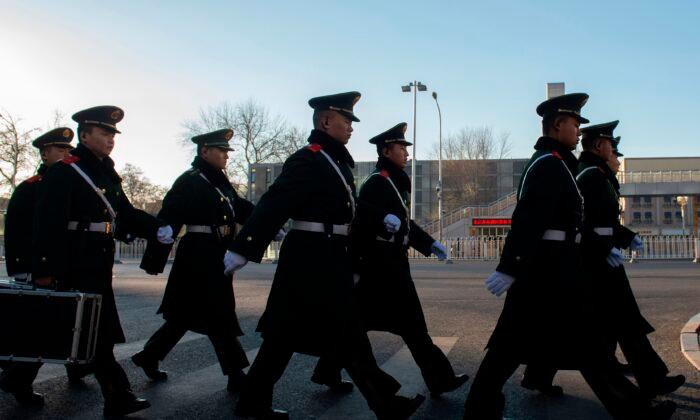WASHINGTON—The Pacific forces of the United States and its allies face their greatest threat since the Soviet Union. That threat comes from China, which has undermined the U.S.-backed global order for 20 years. But the United States is under-equipped for great powers competition, analysts said on Dec. 13 at the Hudson Institute. In the Western Pacific, in particular, the United States isn’t ready.
The Nature of the Threat
Experts weighed in on the nature of the war that could break out in the South China Sea.“General Secretary Xi Jinping does not fear conflict,” said Seth Cropsey, senior fellow and director of the Center for American Seapower at the Hudson Institute. “He worries about a prolonged confrontation with the U.S. and its allies.”
Therefore, in a region of strategic maritime chokeholds, “any conflict China fights must be “short, intense, decisive,” Cropsey said.
The United States must therefore be ready for conflict of this nature. The key to maintaining superiority over China is intelligence, surveillance, reconnaissance, and targeting, commonly known as ISRT, experts said during the panel discussion.
In all four aspects, McGrath and Cropsey made the case that the United States is deficient in resources to react to a threat in the South China Sea in a timely manner, should one arise.
US Strategy to Combat the Threat
The 2018 National Defense Strategy relied heavily on one tactic in particular, analysts said.That tactic is to move U.S. naval posture from one of conventional deterrence to one of deterrence by denial.
As the 14-page strategy summary stated, the idea is to “compete more effectively below the level of armed conflict; delay, degrade, or deny adversary aggression.”
Denial ensures that forces that are present are sufficiently lethal to keep the opponent from aggression in the first place, the analysts said.
Essential Requirements for the Strategy
But the strategy can’t be implemented without more ISRT assets, weapons, and “a way to link all of that together.”“China cannot strike from a standing start,” said McGrath. Therefore, were China to attempt an offensive on Taiwan, a U.S. ally, “with enough warning, the U.S. can increase the costs” for China.
But for this, ISRT feedback is crucial.
Specifically, the United States “needs constant information” on the entire area covered by China’s legitimate Exclusive Economic Zone (EEZ). The EEZ is measured from China’s coastline to waters 200 nautical miles offshore.
Despite the need, however, U.S. maritime intel, surveillance, reconnaissance, and targeting capabilities are so hollowed out that the lack of coordination and development is evident, according to the panel.
Insufficient in Numbers
The core technology and major platform that is supposed to provide the Navy’s capabilities is the Northrop Grumman MQ-4C Triton unmanned aircraft system (UAS).According to Northrop Grumman’s website, the MQ-4C provides “real-time ISR over vast ocean and coastal regions.”
The company states that the system is “based on the proven Global Hawk UAS,” and is built to allow the aircraft “to descend and ascend through harsh maritime weather environments to gain a closer view of ships and other targets at sea when needed.”
Northrop Grumman states that the aircraft can exceed 24 hours in the air over a range of 8,200 nautical miles, while flying higher than 50,000 feet when necessary.
The Hudson analysts find one major problem with the program, however.
However, only 20 are to be operational worldwide at any one time. Flying five orbits of four planes apiece, McGrath called into question the effectiveness of the program to cover just the South China Sea, much less key areas in the rest of the world, such as in the Middle East and in support of NATO operations.
His conclusion? “The MQ-4C buy is incredibly insufficient.”
“A fleet without eyes cannot fight,” said Cropsey.




